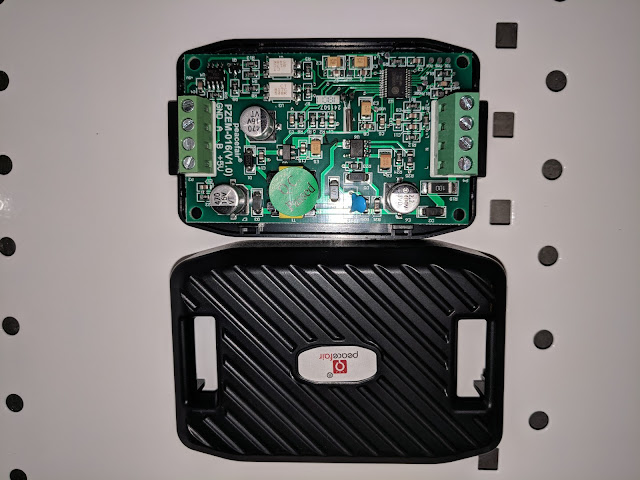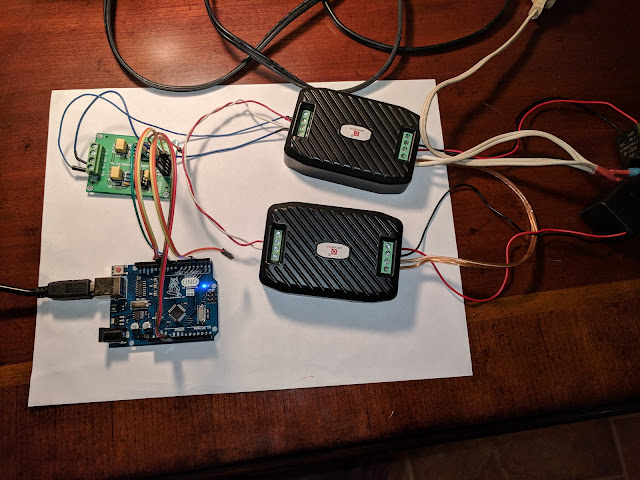I'm linking them all together on the (newly added) subject of 'Power Company' over on the top right of this page. Just scroll down to the 'P' and click on it.
The idea is that I can just put up a blog post, and then use a link to expand on my findings or thoughts easily without having to type them in all over again. Clever right? It also means that I can hit and run on social media. That means I can just slap a link on there and go off to the next place and do the same. There's a lot of social media sites that discuss this kind of thing out there.
No, I'm not a social activist, I'm a customer that is tired of getting raked over by politicians and corporations that are supposed to exist in our best interest.
Therefore, here are three 'Dockets' and one 'Announcement' that are recent and directly impact me and my neighbors in this area. They're real and verifiable. I try to put in links for the various items so people can double check me. Some of the text is my opinion, feel free to comment.
AZCC Docket # E-01345A-18-0111 - In the matter of the application of Arizona Public Service Company for approval of its Rate Rider RCP.
Last month (May, 2018) APS applied to the AZCC for a modification of the "rcp export rider for new on-site solar." This is currently being heard by the commission with no decision yet.
But, what the heck is this?
They invent names and acronyms to make it easier to describe things, but it also complicates reading this stuff to the point where people just give up and wander away. Resource Comparison Proxy (RCP) is a complicated series of observations to gather data, then calculations to show how much APS should be paying solar customers, people with solar that produce an excess of power and return it to APS.
What this is, is if your solar was installed after the cut off date, September 1, 2017, they want to change what they are allowing (as credits) for your excess power. Currently it's shown as $0.12900/kWh, almost 13 cents for each kWh you don't use and give to APS, and they want to lower it to $0.116 a little over a cent less.
They actually claim that it should be zero, but they're not going for that yet.
"... the avoided transmission and distribution capacity cost credit to be applied to the RCP should actually be 0%."They already charge much more to supply power than they pay for it from the excess solar people provide, and now they want to lower that payment (actually credit). This is a decrease of over 10% to them. Essentially they're asking for a 10% decrease in what they agreed to just last fall in the last rate increase decision.
Yes, it's all above board and public in AZCC Docket #E-01345A-18-0111 and it's supporting documentation, but how many have heard about it? Is the news going nuts on this? Have you received any mail about it?
But wait you say, just last year APS agreed not to file for another rate increase until much later. That's completely true, but they're not asking for a rate increase, they're asking for a modification to a rider on your bill. See how it's done? You pay more, but they didn't do it, it's a rider on your bill. When you call them about it, they tell you it was approved by the AZCC.
Why aren't the solar companies complaining about this? Actually, the solar association has filed a response, they're angry that APS is attempting an end run around other agreements. For whatever good it will do.
Those that have solar already are managing to skate past it right now, but APS will be back before the AZCC soon. Those that are getting new solar will be impacted severely by the new rules, so this is a concern that everyone should be interested in.
"On April 27, 2018, APS filed a request for a Four Corners SCR Adjustment to allow recovery of an annual revenue requirement of $67.5 million. APS estimates that the average residential monthly bill impact would be an increase of approximately two percent. A copy of the request is available from APS azenergyfuture.com), and at the Arizona Corporation Commission's eDocket website (edocket.azcc.gov), for public inspection in the above-referenced docket numbers"
"(SCR Adjustment) to permit recovery of a $67.5 million annual revenue requirement."
"That would equate to an approximate 2% customer base rate bill impact. Additionally, APS requests that the SCR Adjustment become effective as soon as possible, but no later than January 1, 2019"
This docket is a direct complaint from a group of citizens against APS's latest rate increase (and fees of course). The dockets that the rate increase was approved were E-01345A-16-0036 AND E-01345A-16-0123. These two dockets were combined because they related to the same things. Eventually, they excluded existing solar, customers for the most part (more on that below), but most of us don't have solar, so the latest rate increase (and fees) from APS is directly impacting us; this also has significant impact on any new solar installations.
Stacey Champion, the named complainant, and a group of several hundred people gathered from a web campaign filed this, but as everyone suspects, APS is dealing in an underhanded fashion with the public and the AZCC. Want some facts to look up for verification? APS used the upcoming 2018 election as leverage against the Corporation Commission in writing and they did it on the public record. The following is a quote I copied and pasted:
"Unfortunately, APS is concerned that delay will only push this matter closer to the November 2018 election, which risks distorting this process and increasing customer confusion."Which means: There's an election coming up and you guys may not get our funding if you don't end this now in our favor. Or maybe, if the complaint isn't decided soon, the voters may notice and vote against you. At any rate, it's pretty clearly a threatening statement. You want to see where they said this, go look at it on the state web site at this <link>. I think it's on page three. Fortunately, Stacey Champion's lawyer noticed what they were doing and put this in the response:
"As for the November 2018 election, it is irrelevant to this proceeding and APS' professed concern that it "risks distorting this process and increasing customer confusion" should not trump Ms. Champion's right to due process."
Basically, Stacey's lawyer said, "We see what you're doing, and it's bullshit." If you want to read this it's at this <link>.This one is on page 4.
I also ran across the following part of a sentence when reading through an APS response to Stacey's complaint. I cut and pasted this right out of the document on the AZCC web site at <link>.
"(iii) an agreement with the solar industry to resolve a multi-year, otherwise intractable dispute regarding distributed generation that included a confidential agreement to avoid undermining the rate settlement through ballot initiatives, legislation, or advocacy at the ACC, "
What this means is that the solar industry in this state got together with APS and agreed that the solar folk wouldn't put up a ballot initiative, sponsor legislation or lobby the Corporate Commission. Since it is confidential, we don't get to see what the Solar companies got in return for GIVING APS FREE REIGN ON THIS RATE INCREASE.
Excuse my language, WHAT THE HECK??
We were all sold down the road by a secret agreement between APS and the Solar Industry ...
Yeah, this really makes me want to talk to a solar company in this state.
Now, if you do actually read this far, think about it a bit. Here is publicly held documentation that APS is using the upcoming election as a tool against the Corporation Commission and they entered into a secret agreement with the solar industry to shut them up. Now act accordingly. I suggest you visit Stacey Champion's site, read the documentation and contribute to the effort. Stacey is taking on APS for us, and they're driving her down with legal fees. If she has to withdraw because she can't afford it, that's the end of the effort to get this back for a rehearing.
https://www.fundedjustice.com/StopTheAPSGreed?ref=ab_6Ezo8KIX4xn6Ezo8KIX4xn
You can also file a complaint directly with the AZCC in support of Stacey's docket. Heres how to complain:
What you have to do is go to
http://eservice.azcc.gov/Utilities/Complaint
And file a complaint.
You MUST state that you're commenting on the existing docket number E-01345A-18-0002 in the first line so they can see what you're doing. I started mine off with:
"In support of Docket Number: E-01345A-18-0002 It appears that APS did not deal in good faith with its ratepayers, the Corporation Commission or the public in general. "
The "In support" part means you agree with Stacey Campbell that APS is a bunch of thieves, and it also shows up in a listing of the documents filed on this docket. You also have to fill out all the blanks in the form to identify yourself as a customer of APS so you will be taken seriously. At the bottom of the form is a space to type in exactly what you think about this.
We have elected representatives in the state legislature, time to actually use them and see what happens, so here are the two for District 1. I'm listing their web pages so you can get to the mail facility easily.
David Stringer is at:
https://www.azleg.gov/House/House-member/?legislature=53&legislator=1748
and Noel Campbell is at:
https://www.azleg.gov/House/House-member/?legislature=53&legislator=1718
Just click on their email address and let them know what you think about this.
Sorry this is so long, but I wanted to get the actual links in so you can see for yourself what I have seen.
I really hope I made you angry.








































